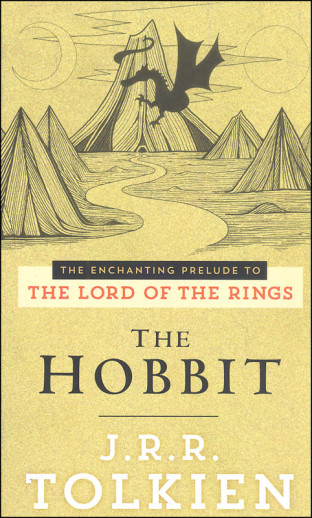We use cookies to make your experience better. To comply with the new e-Privacy directive, we need to ask for your consent to set the cookies. Learn more.
Hobbit
Hobbit Bilbo Baggins is chosen to help the dwarves recover their lost treasure. Adventure and journey follow in this fantasy about elves, dwarves, goblins, and other magical, mystical creatures by writer J.R.R. Tolkien.
Along the way, the company faces trolls, goblins, giant spiders, and worse. But as they journey from the wonders of Rivendell to the terrors of Mirkwood and beyond, Bilbo will find that there is more to him than anyone—himself included—ever dreamed. Unexpected qualities of courage and cunning, and a love of adventure, propel Bilbo toward his great destiny . . . a destiny that waits in the dark caverns beneath the Misty Mountains, where a twisted creature known as Gollum jealously guards a precious magic ring.
Embracing the Socratic methodology of literature instruction outlined in Teaching the Classics, the Ready Readers provide a welcome pick-up-and-go option.for those who want fleshed-out lesson plans. The Readers are exactly that - whole book studies that encompass both comprehension and literary analysis. Discussion-based, the studies are designed to involve the student in question answering and analysis in several general areas - setting, characters, conflict, plot, theme, literary devices, and context. Having identified the best Socratic questions in each area for this particular book, the teacher is aided in handling the discussion by talking point answers. Also provided for each study is a one page summary of the book and a story chart. Although they don't specifically say so, there is an "empty" story chart that looks like it's designed to be copied and then filled out by the student. A completed chart graphically outliming the major structural and thematic elements of each story is provided for the teacher.
Each of the Readers features books in a designated reading level range. The studies however, can be used with students who are somewhat older. In fact, the authors recommend that each year begins with a study that is somewhat below the student's reading level. This serves to acquaint the student with the Socratic methodology and familiarize both the student and the teacher with the discussion environment. The Readers can be used with any unabridged version of the literary selection.
These Readers are a welcome addition to the Teaching the Classics line-up of literature studies. With Teaching the Classics, the parent/teacher receives an excellent introduction to the world of Socratic literary discussion and the tools she/he will need to effectively set up meaningful literature studies. Reading Road Maps - by the same authors - flesh out the process a little more and provide all the "answers," so to speak for 100 favorite books. Still, there are many of us who want more - more guidance and direction - as we embark down this discussion path that we may enthusiastically embrace "theoretically." The sample studies in Teaching the Classics are a starting place, but I would probably be one of those who would like more examples before feeling entirely comfortable setting out on my own armed only with my literature selection and a list of Socratic questions. So, thank you Missy Andrews.
The Readers thoroughly provide all the elements needed for a comprehensive and meaningful literature study. I can already hear the question being asked. "If they're so thorough, do I really need to watch the Teaching the Classics video seminar?" I have no doubt that the Andrews would answer with an emphatic "yes!" The Readers are obviously designed to complement the TTC series rather than replace it. While someone picking up a Reader could probably do a passable job of leading a discussion on any particular book, the fullness and richness of that same study conducted by a TTC "graduate" will make that "passable" job seem pale by comparison. So, to summarize the relationship between these products: Teaching the Classics provides the philosophical and methodological foundation. Reading Road Maps provides "framing" for 100 books, while the Ready Readers provide a complete finishing off of a literary "room" for a different series of books. ~ Janice
| Product Format: | Softcover Book |
|---|---|
| Brand: | Ballantine |
| Author: | J.R.R. Tolkein |
| Grades: | 5-AD |
| ISBN: | 9780345339683 |
| Length in Inches: | 6.75 |
| Width in Inches: | 4.25 |
| Height in Inches: | 1 |
| Weight in Pounds: | 0.3688 |

